This university restructuring is a fundamental shift in thinking model, from "expansion to increase access" to "merger to improve quality and class". Let's look back at 30 years of transformation from elite to mass of Vietnamese university education (1995-2025) to draw out the "golden principles" for this university restructuring.
"Hot development" and profound consequences
By 2025, Vietnam will have about 240 universities, including more than 170 public universities. The period of strongest increase in the number of universities was in the 5 years from 2005 to 2010 (an increase of 76 colleges and 48 universities, an average of 2 new universities and colleges per month). In the period from 2013 to 2021, 28 new universities were established, including 19 public universities. The training scale has grown continuously, reaching 2,205,127 students in the 2023-2024 school year.
The student/faculty ratio has been on an upward trend in recent years, reaching 27.4 students/faculty in 2021, indicating that the size of enrollment is outpacing the growth of quality faculty, leading to the risk of diluting teaching quality.
The rapid development of the past three decades has created a university education system with many inherent weaknesses. These shortcomings do not exist separately but are closely linked together, forming a vicious cycle that hinders development.
One of the core weaknesses of the system is the fragmented, small-scale, and unsynchronized management. Universities operate under the management of many different ministries, branches, or local authorities, leading to a lack of an overall development strategy, inconsistent standards, and ineffective resource allocation.
Weak governance has led to a deep crisis in investment resources. Specifically, financial shortages: State budget spending on university education is very low, only about 0.27% of GDP and the actual spending in 2020 was only 0.18% of GDP, much lower than other countries in the region and the world. In addition, there is a shortage of facilities, a shortage of high-quality human resources, a limited proportion of lecturers with doctoral degrees, weak scientific research and innovation capacity...
Universities have overlapping training programs, many universities open the same majors while other fields are lacking human resources. Universities tend to follow the market by opening "hot" majors such as economics , business administration, information technology and gradually narrow or close specialized training majors that are strategic to national development. In the period 2016-2021, the number of students enrolling in majors in agriculture, forestry, fisheries and aquaculture decreased by more than 30% compared to the previous period, by 2022, accounting for less than 2% of the total number of students enrolled nationwide. This is a dangerous paradox: while these economic sectors are in the process of modernization, applying high technology and in great need of high-quality human resources, the supply of well-trained labor is depleted.
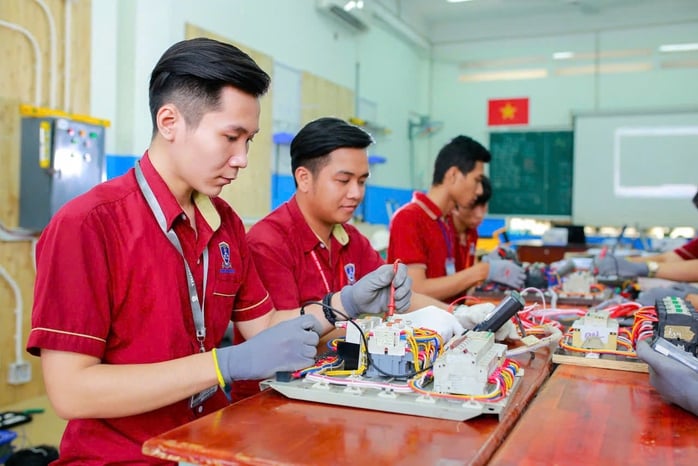
Private universities are required to improve their quality to compete with large universities and will be reorganized. Photo: BAO LAM
Reaching the world
Resolution 71 has set extremely ambitious goals: by 2030: 100% of higher education institutions will meet national standards, at least 8 institutions will be among the top 200 universities in Asia, and investment will be made to develop 3 to 5 elite universities following the international-class research model. These goals are completely unattainable with a fragmented, under-resourced and inefficient system like today. Therefore, restructuring through mergers is the only way to concentrate resources, creating strong enough universities, capable of competing and integrating internationally.
Instead of spreading investment, the state can concentrate financial resources and modern facilities such as laboratories and libraries on a few large, multidisciplinary and multi-field universities. Elite leadership and lecturers will also be gathered, creating strong enough academic groups to lead. The large universities after the merger will have enough scale to develop diverse training programs, promote interdisciplinary and multi-disciplinary research, solve big problems and attract national and international research projects.
The formation of a number of "locomotive" universities with large scale and resources is the only feasible way for Vietnam to have a name on the world map of higher education. A few strong universities with international brands will have much greater influence than hundreds of small, little-known schools.
The logic of the merger is absolutely correct, however, the biggest risk lies not in the policy but in the implementation process. International experience shows that to be successful, this process must adhere to strict principles.
First of all, the merger process must be based on a scientific project and roadmap, and cannot be a mechanical addition of schools together. Careful screening is needed: dissolving weak schools, merging schools with complementary training fields to create a combined strength, avoiding the situation where a strong school has to "carry" a weak school and its quality is dragged down.
Next, there must be openness, transparency and consensus. This is the key factor to overcome the biggest challenge of fear of change and concern about personal interests. The entire process, from selection criteria, implementation roadmap to related policies, must be open, transparent and have full consultation with stakeholders, including staff, lecturers and students, to create social consensus.
Next is selecting talented leaders and building effective governance. The success of a new organization depends largely on its leader. Selecting a talented, dedicated leadership team that can reconcile different academic cultures and lead a new vision is a decisive factor.
A very important issue is to protect the interests of the parties involved: The interests of students and lecturers must be put first. There must be a mechanism to ensure that students' studies are not interrupted, and at the same time, there must be a clear policy on the arrangement and reassignment of staff and lecturers in a reasonable and fair manner.
We need to learn from international experience as countries like China and South Korea have undertaken large-scale restructuring to create world-class universities. Their lessons on providing government support packages, building empowerment policies and allocating specific resources are valuable experiences for Vietnam in the implementation process.
Enter the quality race
Merging public universities will reshape the map of Vietnam's higher education. Instead of just a simple "public-private" division, the higher education market is transforming into a real race for training quality, which will be a big challenge for private schools.
Ms. Nguyen Thi Mai Binh, Head of Training Department - Hung Vuong University, Ho Chi Minh City, admitted that there are concerns in the enrollment work. However, this change is inevitable for public and non-public universities to improve training quality and avoid wasting resources.
"Prioritizing training in "leading" fields to carry out the task of developing science and national policies is a correct policy. Despite being under great pressure, non-public schools still have advantages in terms of flexibility in administration, program development and the ability to quickly respond to market needs" - Master Binh stated his opinion.
MSc. Bui Quang Trung, Head of the Communications Department - Nguyen Tat Thanh University, said that administratively, the merger does not directly affect non-public schools, because this is just a streamlining of management points in the public sector. However, the formation of "super public schools" from the merger wave can create a certain pressure on enrollment in terms of brand. "In recent years, the school has advocated investing in specialized practice equipment and modern facilities to increase competitiveness" - MSc. Trung affirmed.
To attract students and ensure quality human resources for the Mekong Delta region, Cuu Long University has proposed many solutions. "The school will increase investment in facilities and modern equipment to serve teaching and learning in the most optimal way. We are almost finished building an 8-storey health science building with an investment capital of about 150 billion VND. In the near future, we will build new buildings for economics, social sciences and humanities, engineering and technology... and open many new majors to meet the resources to serve the development needs of society" - Associate Professor, Dr. Luong Minh Cu, principal of the school, informed.
H.Xuan - C.Linh
__________
(*) See Lao Dong Newspaper from September 30 issue
Source: https://nld.com.vn/sap-xep-lai-he-thong-dai-hoc-la-tat-yeu-nguyen-tac-vang-de-tai-cau-truc-thanh-cong-196251002213032579.htm












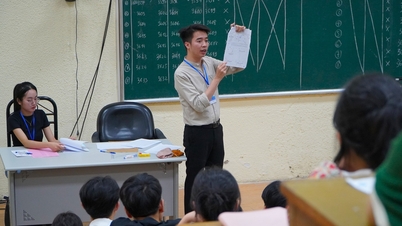


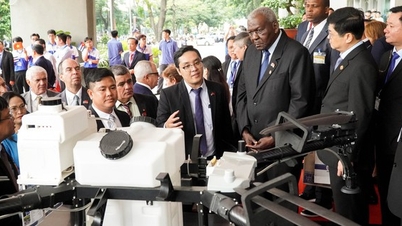
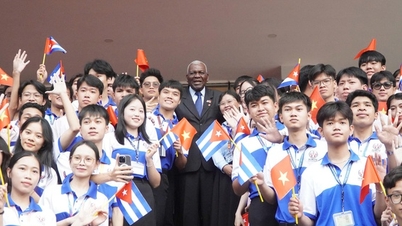









![[Photo] Binh Trieu 1 Bridge has been completed, raised by 1.1m, and will open to traffic at the end of November.](https://vphoto.vietnam.vn/thumb/1200x675/vietnam/resource/IMAGE/2025/10/2/a6549e2a3b5848a1ba76a1ded6141fae)














































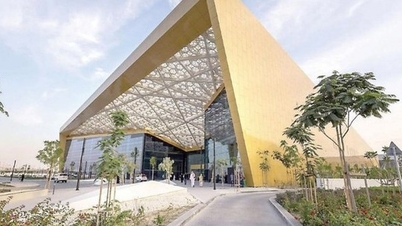

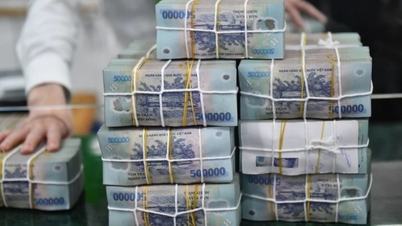





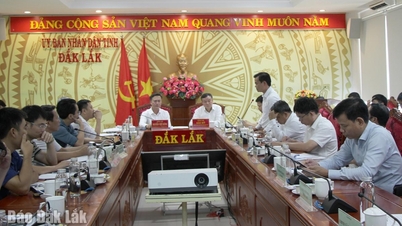














Comment (0)